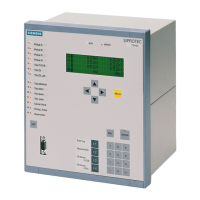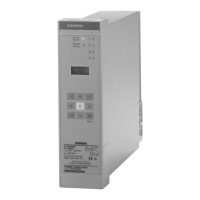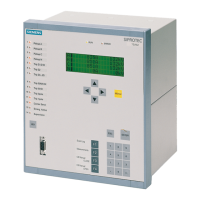Functions
2.14 Differential Protection and Its Protected Objects
SIPROTEC, 7UM62, Manual
C53000-G1176-C149-7, Release date 03.2010
103
Current Stabilization
When an external fault causes heavy currents to flow through the protected zone, differences in the magnetic
characteristics of the current transformers CT1 and CT2 under conditions of saturation may cause a significant
current to flow through the element M, which can cause a tripping. To prevent the protection from such over-
functioning, a stabilizing current is imposed.
The stabilizing quantity is derived from the arithmetical sum of the absolute values of |I
1
| + |I
2
|. The following
definitions apply:
a tripping or differential current
I
diff
= |I
1
+ I
2
|
and the stabilizing or restraint current
I
stab
= |I
1
| + |I
2
|
I
diff
is derived from the fundamental frequency current and produces the tripping effect, I
stab
counteracts this
effect.
To further illustrate the effect, let´s look at three important operating conditions with ideal and adepted mea-
surement quantities:
Figure 2-31 Definitions of Currents
1. Through-flowing current under undisturbed conditions or external fault: I
2
reverts its direction, i.e. changes
sign, i.e. I
2
= –I
1
; also |I
2
| = |I
1
|
I
diff
= |I
1
+ I
2
| = |I
1
– I
1
| = 0
I
stab
= |I
1
|+ |I
2
| = |I
1
| + |I
1
| = 2 · |I
1
|
No tripping value (I
diff
); stabilisation (I
stab
) corresponds to twice the through-flowing current.
2. Internal short-circuit, e.g. fed with equal currents each side:
The following then holds: I
2
= I
1
; also: |I
2
| = |I
1
|
I
diff
= |I
1
+ I
2
| = |I
1
+ I
1
| = 2 · |I
1
|
I
stab
= |I
1
|+ |I
2
| = |I
1
| + |I
1
| = 2 · |I
1
|
Tripping value (I
diff
) and stabilising value (I
stab
) are equal and correspond to the total fault current.
3. Internal short-circuit, fed from one side only:
In this case, I
2
= 0
I
diff
= |I
1
+ I
2
| = |I
1
– 0| = |I
1
|
I
stab
= |I
1
|+ |I
2
| = |I
1
| + 0 = |I
1
|
Tripping value (I
diff
) and stabilising value (I
stab
) are equal and correspond to the one-sided fault current.
This result shows that for the internal fault under ideal conditions I
diff
= I
stab
. Consequently, the characteristic of
internal faults is a straight line with a upward slope of 45° (dot-and-dash line in the following figure).
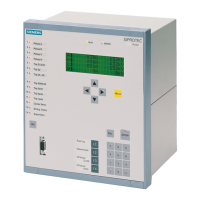
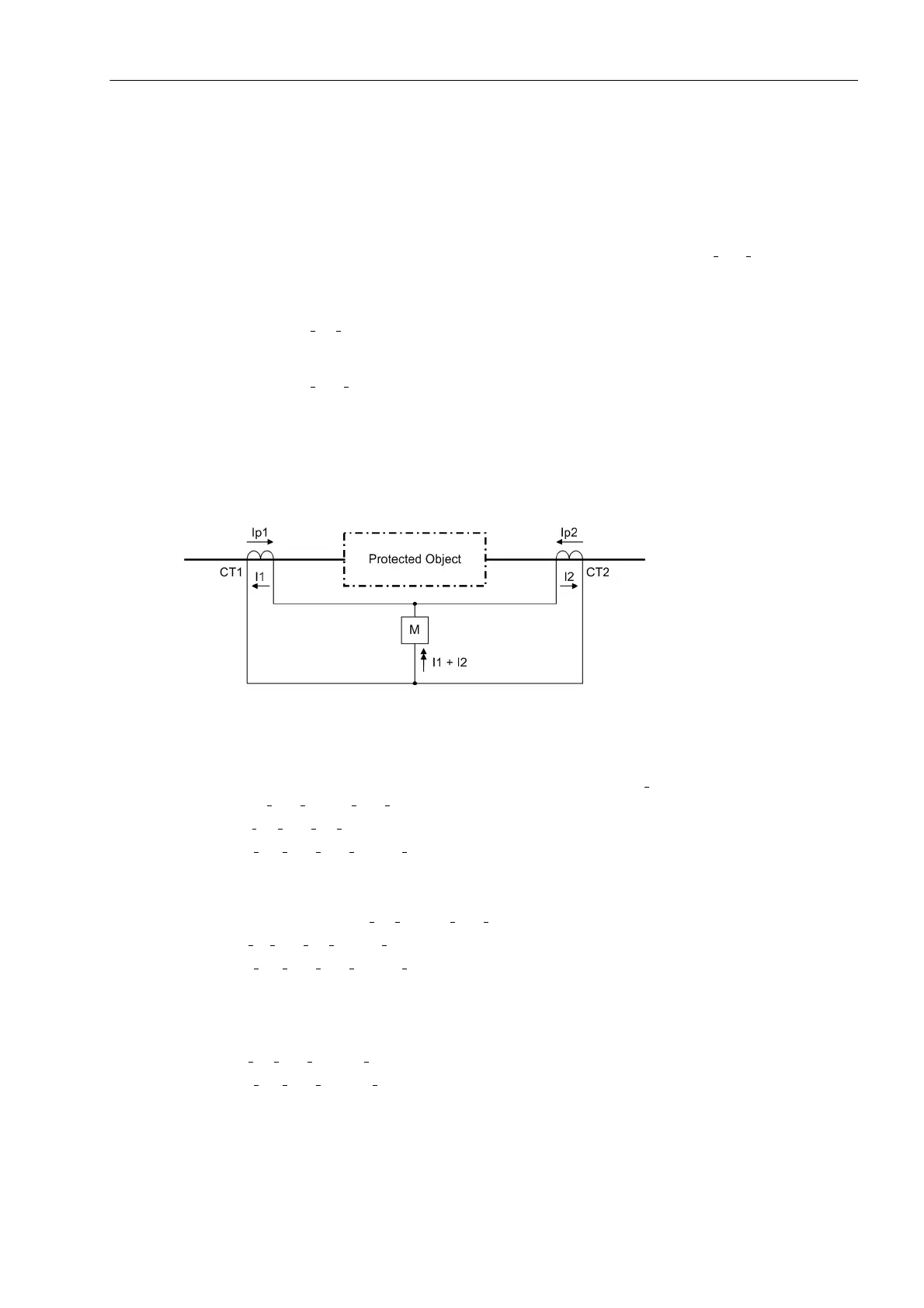